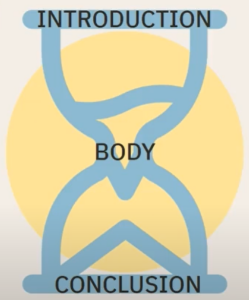Writing for Cohesion and Flow

You recently received feedback from your instructor, and they suggested that you work on the “cohesion and flow” of your recently submitted paper. But what are cohesion and flow, and how do you use them in your writing?
The following guide and video are aimed at helping you write more cohesively and improve the flow of ideas and language in your writing.
First, some definitions
COHESION:
Writing and choosing language carefully so readers can easily follow how each sentence and paragraph naturally connects to the next, creating a sense of seamless transitions between concepts and topics. Cohesion ensures that ideas are logically connected at the sentence and paragraph level so the reader can follow the thread of the argument being presented.
FLOW:
Paying careful attention to the organization and sequence of ideas in your writing to help readers easily connect with new information in a smooth and logical progression. Flow makes the writer’s train of thought easy to follow from beginning to end – it’s about the big picture of how ideas fit together.
Too Long, Didn’t Read (TLDR):
- Cohesion operates at the local, sentence and paragraph level.
- While flow works at the global, whole-text level.
- Both are essential for writing that is clear, coherent and easy to read.
So now that we have an idea of what cohesion and flow are, what steps can we take to use these concepts in our writing?

Start with the structure of your whole paper

Part of creating a fantastic, cohesive piece of writing is following a logical structure that helps ease your reader into new topics gradually, introduces ideas in a logical order, and creates natural connections between different concepts.
Write using the Hourglass Structure
In general, we recommend structuring your essay using the Hourglass Structure. How does this structure work?
By and large, your essay or paper will feel more cohesive if you:
- Discuss ideas more broadly in the introduction of your paper
- Narrow into more specific details in the body paragraphs
- Broaden back out to connect these details back to the larger context in your conclusion
Step-by-Step: Apply the Hourglass Structure
- Beginning of your introduction: Start broad and provide background on the topic
- End of your introduction: Narrow to a specific argument/hypothesis you have chosen
- Body paragraphs: Provide evidence/examples to support your argument
- Beginning of conclusion: Tie evidence together to solidify your argument
- End of conclusion: Reconnect to the larger context and share broader implications

Zooming in on your paragraph structure
Another way to write more cohesively is to work on the structure of each paragraph you write. Generally, we want to focus on one main idea or argument in each paragraph. Then, the argument presented in each paragraph needs to be supported with more details and evidence. The step-by-step below provides more detail for what a well-structured paragraph can look like.
Step-by-Step: Writing well-structured paragraphs
-
- Start each paragraph with a strong topic sentence (each paragraph should focus on one main idea or argument)
- Body sentences following the evidence cycle (make an assertion, provide evidence, add your commentary)
- Connect evidence and assertions with a conclusion statement
- Move into the next paragraph’s ideas using a transition sentence or phrase

Enhance your flow: Transitional Devices
Transitional words and phrases can help connect ideas and signal shifts between different parts of your essay. These transitions guide readers smoothly from one point to the next.
Examples: transitional devices that will make your writing sound more cohesive
- ADDITION: Additionally, Furthermore, Moreover, Also, In addition
- CONTRAST: However, On the other hand, Nevertheless, Conversely
- CAUSE/EFFECT: Therefore, Consequently, Thus, As a result
- EXAMPLES: For example, Such as, In particular, Specifically
- COMPARISON: Similarly, In the same way, Just as, Compared to
- CONCLUSION: In conclusion, Overall, In summary, Therefore
- SEQUENCE: First, Second, Third, Next, Then, Finally
Working on the cohesion and flow of our writing can be intimidating, but you don’t need to get it right on the first draft. The best way to improve these aspects of your writing is to get your ideas down onto paper and then iteratively improve the flow and cohesion of your writing draft after draft.
You don’t have to work on these concepts alone. Here are a few ideas to help you get started on improving the cohesion and flow of your papers:
- Reach out to your instructor and ask for feedback on specific places to improve the cohesion and flow of your submitted writing.
- Ask family and friends to read your work and point out places where your writing feels disjointed or hard to understand.
- Employ a Generative AI Tool and prompt it for suggestions on how to restructure your writing to enhance cohesion and flow.
“Start writing, no matter what. The water does not flow until the faucet is turned on.”
-Louis L’Amour
This guide was created with the assistance of Perplexity AI. All illustrations from StorySet.
